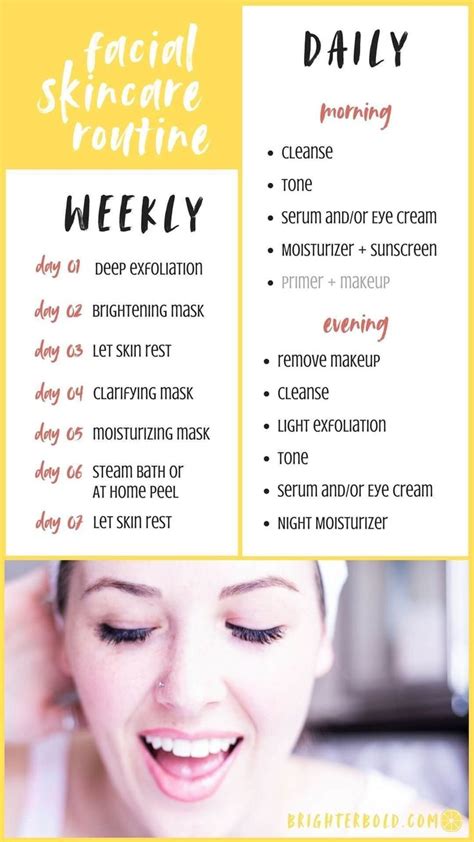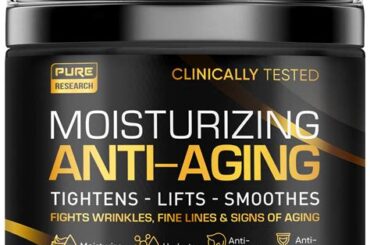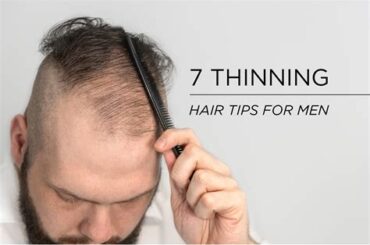Identify Your Skin Type
When it comes to skincare, one size does not fit all. Identifying your skin type is the first step in creating an effective skincare routine. Not only will this help you choose the right products, but it will also enable you to address specific skin concerns. There are five main skin types: normal, dry, oily, combination, and sensitive. Let’s take a closer look at each type and learn how to determine which one is yours.
Normal skin is often considered the most balanced type. It’s neither too dry nor too oily and has a smooth texture. If your skin is generally problem-free and doesn’t exhibit excessive dryness or oiliness, you likely have normal skin.
Dry skin often feels tight, rough, and may have a dull appearance. It lacks moisture and tends to be more sensitive to environmental factors. If your skin often feels parched, flakes easily, or experiences discomfort during colder months, you may have dry skin.
Oily skin is characterized by excess sebum production, resulting in a shiny complexion and enlarged pores. People with oily skin often struggle with frequent breakouts and may find that makeup doesn’t stay in place throughout the day.
Choose the Right Cleanser
Choosing the right cleanser for your skin is an important step in your skincare routine. With so many options available on the market, it can be overwhelming to find the perfect one that suits your skin type and addresses your specific needs. In order to make an informed decision, it’s essential to understand your skin type and the ingredients that work best for you.
Identify Your Skin Type: Before choosing a cleanser, it’s crucial to identify your skin type. There are generally four main skin types – dry, oily, combination, and sensitive. Dry skin tends to feel tight and flaky, while oily skin is prone to excess sebum production and shine. Combination skin may have a mix of both dry and oily areas, while sensitive skin is easily irritated and reactive.
Choose the Right Cleanser: Once you have identified your skin type, it’s time to choose a cleanser that caters to your specific needs. For dry skin, look for cleansers that are hydrating and gentle, such as cream or lotion-based cleansers. Oily skin types can benefit from oil-free or foaming cleansers that help remove excess oil and unclog pores. Combination skin can opt for gel-based cleansers that balance oil production without stripping the skin. Sensitive skin requires extra care and should be treated with fragrance-free and hypoallergenic cleansers.
Look for Key Ingredients: When selecting a cleanser, pay attention to the ingredients list. Some key ingredients to look out for include salicylic acid or benzoyl peroxide for acne-prone skin, glycolic or lactic acid for exfoliation and brightening, hyaluronic acid for hydration, and antioxidants like green tea or vitamin C for anti-aging benefits. Avoid harsh ingredients like sulfates or alcohol, as they can strip the skin of its natural oils and cause dryness.
- Content Rich Tips:
- Always patch test a new cleanser on a small area of your skin before using it on your entire face.
- Consider double cleansing if you wear heavy makeup or SPF products to ensure all impurities are thoroughly removed.
- Adjust your cleanser according to the seasons – opt for a gentler cleanser in the winter months and a deep-cleansing one in the summer.
| Skin Type | Ideal Cleanser Types |
|---|---|
| Dry Skin | Cream or lotion-based cleansers |
| Oily Skin | Oil-free or foaming cleansers |
| Combination Skin | Gel-based cleansers |
| Sensitive Skin | Fragrance-free and hypoallergenic cleansers |
Remember, choosing the right cleanser is the foundation of a healthy skincare routine. By understanding your skin type and selecting a cleanser with suitable ingredients, you can cleanse your skin effectively without causing any harm or irritation. Don’t be afraid to experiment with different products until you find the perfect cleanser that leaves your skin feeling refreshed and revitalized.
Exfoliate Regularly for a Healthy Glow
Exfoliation is an essential step in your skincare routine if you want to achieve a healthy and radiant glow. This process involves removing dead skin cells from the surface of your skin, revealing a fresh layer underneath. By exfoliating regularly, you can improve the texture and tone of your skin, unclog pores, and even prevent breakouts. Let’s dive deeper into the benefits of exfoliation and how to incorporate it into your skincare regimen.
Firstly, exfoliating helps to slough off dead skin cells that can accumulate on the surface of your skin, making it appear dull and lifeless. By removing these dead cells, you allow younger, healthier skin cells to come to the surface, giving you that desirable healthy glow. Exfoliation also stimulates cell turnover, which can help to reduce the appearance of fine lines and wrinkles, giving your skin a more youthful appearance.
Secondly, exfoliation can help to unclog pores and prevent acne breakouts. When dead skin cells build up on the surface of your skin, they can mix with oils and bacteria, leading to blocked pores and the formation of pimples. Regular exfoliation helps to remove these dead cells and keep your pores clear, reducing the likelihood of breakouts. However, it is important to choose the right exfoliator for your skin type to avoid irritation.
- Physical exfoliators: These exfoliators contain granules or beads that physically scrub away dead skin cells. They can be too harsh for sensitive skin, so it’s important to massage them gently onto your skin to avoid irritation.
- Chemical exfoliators: These exfoliators contain acids or enzymes that dissolve dead skin cells. They are typically gentler on the skin and can be a better option for sensitive or acne-prone skin.
Lastly, it’s essential to moisturize your skin after exfoliation. Exfoliating can temporarily strip away some of your skin’s natural oils, leaving it feeling dry and tight. To replenish moisture and maintain a healthy skin barrier, choose a moisturizer that suits your skin type. Look for ingredients like hyaluronic acid or ceramides, which can hydrate and nourish your skin.
| Benefits of Exfoliation: | Tips for Effective Exfoliation: |
|---|---|
|
|
In conclusion, exfoliating regularly is a crucial step in achieving a healthy and glowing complexion. It helps to remove dead skin cells, unclog pores, and improve the overall appearance of your skin. Remember to choose the right exfoliator for your skin type and moisturize after exfoliation to maintain a balanced and hydrated complexion. Incorporate exfoliation into your skincare routine 1-2 times a week, and you’ll soon enjoy the benefits of a radiant and youthful glow.
Moisturize to Hydrate and Protect
Moisturizing is an essential step in any skincare routine. It not only helps to keep our skin hydrated but also plays a crucial role in protecting it from environmental damage. Whether you have oily, dry, or combination skin, finding the right moisturizer for your skin type is key to maintaining a healthy and youthful complexion.
One of the main benefits of moisturizing is its ability to hydrate the skin. When our skin lacks moisture, it can become dry, flaky, and prone to irritation. By applying a moisturizer, we provide our skin with the hydration it needs, helping to restore its natural moisture balance. Look for moisturizers that contain ingredients like hyaluronic acid, glycerin, or ceramides, as they are known for their hydrating properties.
Another important aspect of moisturizing is the protection it provides to our skin. Moisturizers create a barrier on the skin’s surface, which helps to prevent moisture loss and shields the skin from external aggressors such as pollution or UV rays. Some moisturizers also contain antioxidants like vitamins C and E, which help to neutralize free radicals and protect the skin from oxidative stress.
In addition to hydrating and protecting the skin, moisturizers can also improve the overall texture and appearance of the skin. They can help to soften rough patches, reduce the visibility of fine lines and wrinkles, and give the skin a healthy, radiant glow. When choosing a moisturizer, consider your skin type and any specific concerns you may have, such as sensitivity or acne-prone skin.
In conclusion, moisturizing is a vital step in any skincare routine. By moisturizing regularly, we can keep our skin hydrated, protected, and looking its best. Remember to choose a moisturizer that suits your skin type and incorporate it into your daily skincare regimen for maximum benefits.
Sunscreen: The Key to Ageless Skin
When it comes to maintaining youthful and healthy skin, one product stands out as an absolute essential: sunscreen. Many people underestimate the importance of using sunscreen on a daily basis, but it is truly the key to achieving ageless skin. Whether you’re spending time outdoors or simply going about your daily routine, incorporating sunscreen into your skincare routine is crucial for protecting your skin from harmful UV rays.
Sunscreen helps to shield your skin from the damaging effects of the sun, including sunburn, premature aging, and even skin cancer. It works by forming a protective barrier on the surface of your skin, reflecting and absorbing the sun’s harmful rays. By using sunscreen regularly, you can significantly reduce the risk of developing skin damage and other related issues.
When choosing a sunscreen, it’s important to consider your skin type and individual needs. Look for a broad-spectrum sunscreen that offers protection against both UVA and UVB rays. UVA rays can penetrate deeper into the skin, causing long-term damage and aging, while UVB rays are responsible for sunburn. By using a broad-spectrum sunscreen, you can ensure comprehensive protection against both types of harmful rays.
- Skin Type: Consider your skin type when selecting a sunscreen. If you have oily or acne-prone skin, opt for a lightweight, oil-free sunscreen that won’t clog your pores. For dry or sensitive skin, choose a moisturizing sunscreen that provides extra hydration.
- SPF: Sun Protection Factor (SPF) is a measure of a sunscreen’s ability to protect your skin from UVB rays. The higher the SPF, the greater the level of protection. It is generally recommended to use a sunscreen with an SPF of at least 30.
- Application: Apply sunscreen generously to all exposed areas of your skin, including your face, neck, arms, and legs. Be sure to reapply every two hours, or more frequently if you are sweating or swimming.
| Benefits of Using Sunscreen | How to Choose the Right Sunscreen | Tips for Proper Sunscreen Application |
|---|---|---|
| – Prevents sunburn | – Consider your skin type | – Apply generously to all exposed areas |
| – Reduces the risk of skin cancer | – Look for broad-spectrum protection | – Reapply every two hours |
| – Prevents premature aging | – Select an appropriate SPF | – Use sunscreen even on cloudy days |
| – Protects against skin damage | – Choose a lightweight or moisturizing formula | – Seek shade during peak sun hours |
Remember, the key to ageless skin lies in protecting it from the sun’s harmful UV rays. By incorporating sunscreen into your daily skincare routine, you can safeguard your skin from damage, reduce the risk of premature aging and skin cancer, and maintain a youthful and radiant complexion.
Frequently Asked Questions
Question 1: How do I identify my skin type?
Identifying your skin type involves examining your skin’s oiliness, dryness, and sensitivity. You can determine your skin type by observing how it looks and feels throughout the day, such as oily in the T-zone or dry and tight after washing.
Question 2: What is the right cleanser for my skin type?
Choosing the right cleanser depends on your skin type. For oily skin, look for gel-based or foam cleansers. For dry skin, opt for cream or oil-based cleansers. For sensitive skin, use gentle, fragrance-free cleansers.
Question 3: How often should I exfoliate?
Exfoliating should be done 1-2 times a week for most skin types. However, sensitive skin should exfoliate less frequently, perhaps once every 2 weeks, to avoid irritation.
Question 4: Why is moisturizing important for my skin?
Moisturizing is important to hydrate and protect your skin. It helps maintain the skin’s moisture barrier, preventing dryness, and providing a smooth and youthful appearance.
Question 5: What should I look for in a moisturizer?
When choosing a moisturizer, look for ingredients like hyaluronic acid, glycerin, ceramides, and antioxidants. These ingredients help retain moisture, strengthen the skin’s barrier, and provide anti-aging benefits.
Question 6: Why is sunscreen essential for ageless skin?
Sunscreen is crucial for ageless skin because it helps protect against harmful UV rays that can cause premature aging, wrinkles, and sunspots. It also reduces the risk of skin cancer.
Question 7: How often should I apply sunscreen?
It is recommended to apply sunscreen every day, even on cloudy days, and reapply every two hours if exposed to the sun. Make sure to use an SPF of at least 30 and choose a broad-spectrum sunscreen to shield against both UVA and UVB rays.





